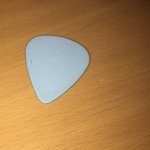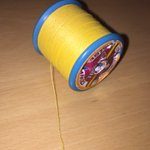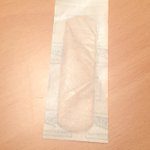
Picture taken from Google Images – www.stationeryinfo.com
For this TDT we have been asked to research into colours and aspects of them before going in to personal research around our own favourite colours. After completing this i will then make my own colour wheel, which I will photograph and post at the end of this post.
First, I aim to define some artistic terms to be able to understand and reinforce my learning.
Primary Colours- There are 3 Primary Colours, which are Red Yellow and Blue. These are the main element of all other colours and no other colours can be mixed together to make these colours (Williams,2008).
Secondary Colours- The secondary colours are purple, green and orange. These new colours are made by mixing any two of the primary colours together (Williams,2008).
For example:
Red + Blue = Purple
Blue +Yellow = Green
Yellow+ Red= Orange
Hue- Are the 12 most bright and pure colours, the 3 primary colours, the 3 secondary colours and the 6 tertiary colours. All of these 12 colours together form the Colour Wheel (Williams, 2008). Hues can also be measured in degrees of where they are on the colour wheel, from 0 – 359 degrees (Workwithcolour,2008).
Brightness- Brightness is something which a person will determine themselves. It is often confused by the lightness of the colour. Brightness can be change by using the saturation tool as a higher saturation will make the colour brighter. The hue will also affect the colours brightness (Workwithcolour,2008).
Temperature- Temperature is expressed through the description of the lighting on a colour. This can be using either Blue (cool) or Yellow (warm) it is measured in degrees of Kelvin (Lowel,no date).
Expressive Qualities- Expressive qualities in colour express the mood and emotion behind the piece. It can also be used to express atmosphere such as tensions surrounding the piece etc (Color, no date).
Colour Theory- Colour theory is the heading which all of these definitions come under. Colour theory is the breakdown of colour under 3 sections; colour wheel, colour harmony and the context in which colour is used (Voodoo Publications, no date).
Scientific Properties of Colour and Light – Light is part of the electromagnetic spectrum, which is the only part of the spectrum that is visible to the human eye. The different wavelengths of light all radiate different colours, for example the shorter wavelengths give off a blue colour,where as the slightly longer wavelengths show a yellow/green colour (IES, 2011). ‘Rainbow light’ as such, can be shown through a science experiment when a ray of light is directed to shine through a glass pyramid this will split the ray of light into the coloured spectrum as shown below. This would be good to look into in the primary classroom.
Picture Taken from Google Images – mangahelpers.com
My Favourite Colour

Picture taken from Google Images – colorpalettes.net
Since I was a young girl my favourite colour has always been pink. I have chosen this TDT specifically as I am quite interested in finding out more about it.
As the colour pink comes in many different shades and tones they all reflect different emotions and feelings. For example the darker shades of pink, express feelings of romance and passion however the less strong shades of pink, like baby pinks, are more childish and show fun and excitement (Smith, 2015). Smith (2015) also tells us that pink has connotations of happiness and times of being carefree and childish.
The colour pink can also have a physical affect on us by promoting energy and confidence. As well as this pink is also known to be used in prison cells to calm erratic behaviour (Smith,2015).
The colour pink is also known world wide on a ribbon, which signifies hope in the hunt to find a cure for breast cancer.
My Colour Wheel

References
Color (no date) Elements in art – color. Available at: http://highered.mheducation.com/sites/dl/free/0072965258/340806/color.html (Accessed: 23 September 2016).
IES (2011) Discover lighting! The science of light > color. Available at: http://www.ies.org/lighting/science/color.cfm (Accessed: 23 September 2016).
Lowel (no date) Lighting Resource Centre. Available at: http://lowel.tiffen.com/edu/color_temperature_and_rendering_demystified.html (Accessed: 22 September 2016).
Smith, K. (2015) All about the color PINK meaning, psychology, symbolism. Available at: http://www.sensationalcolor.com/color-meaning/color-meaning-symbolism-psychology/all-about-the-color-pink-4342#.V-U7H5MrJPM (Accessed: 23 September 2016).
Voodoo Publications, C. (no date) Basic color theory. Available at: http://www.colormatters.com/color-and-design/basic-color-theory (Accessed: 23 September 2016).
Williams, S. (2008) Primary colors « color wheel artists. Available at: http://color-wheel-artist.com/primary-colors.html (Accessed: 22 September 2016).
Workwithcolour (2008) Color properties: Hue, tint, shade, saturation, brightness, Chroma. Available at: http://www.workwithcolor.com/color-properties-definitions-0101.htm (Accessed: 22 September 2016).






















 Picture Taken from Google Images –
Picture Taken from Google Images – 




